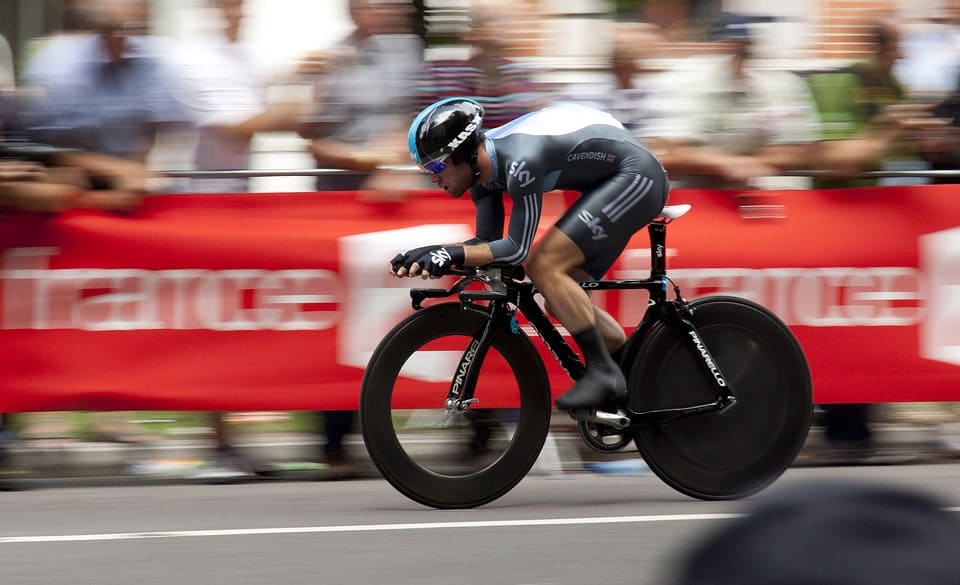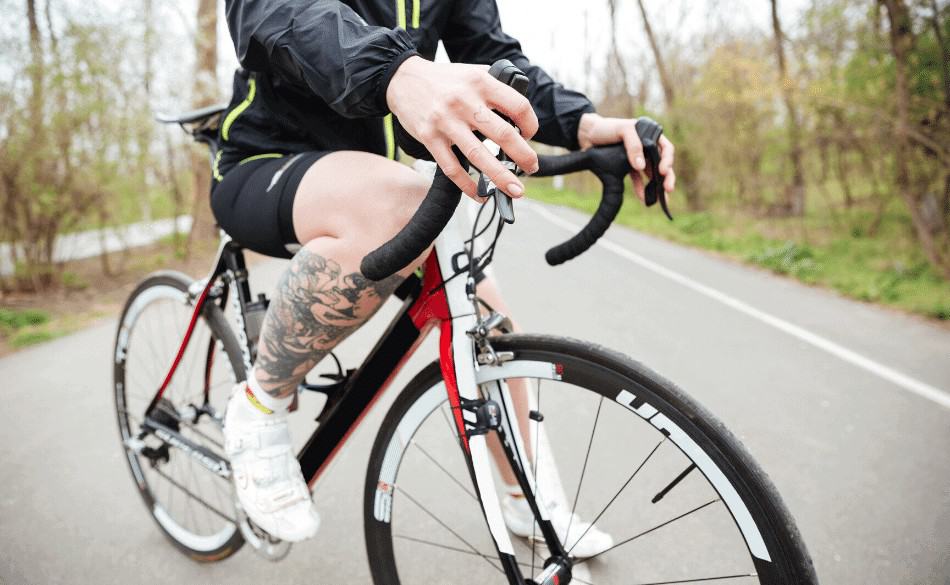
What Is The Right Pedaling Technique?
Page Contents
A question often asked by cyclists is whether their pedaling technique is correct or what is the right way to pedal. This is a really complex question since an assessment is not exactly easy to measure or quantify. In the following article we will try to explain as simply as possible what science has to offer on the right way to pedal.
Positive And Negative Forces During Pedalling
It is always interesting to explain that not all the force applied to the pedal translates instantly into speed. In this sense, we have to talk about two types of forces: tangential and radial. Tangential forces are those that produce movement on the connecting rods, that is, they are the forces that are applied in a transverse direction to the direction of the connecting rod.
On the other hand, we also find opposite forces that are called radial and are characterized because they do not cause any movement on the cranks as they are directed towards the center of the bottom bracket axis. The sum of the tangential forces of the right and left pedal multiplied by the length of the connecting rod is called torque. And total power is the result of multiplying torque by angular velocity or cadence.
At this point we really get to apply the most useful force to propel the bike forward. When the pedal reaches the bottom of the pedal, we can see that the power we are producing is rather low, which is logical if we stop to think about the position of the foot at that point of the pedal.
The part pedal stroke that normally causes the most amazement is the one that goes from 180 to 360 degrees, that is, when analyzing what happens in the phase in which the pedal is in ascent. During most of this phase, the power generated on the pedal is negative, that is, the crank is braking no matter how well you pedal. Unless we are actively pulling the pedal upwards, we always leave a certain weight on the pedal that brakes the force that the opposite leg is doing downwards. Thus, the power we generate on each pedal is the result of the power we generate when the pedal is lowering less power we lose when the pedal is rising.
With this concept in mind, we could think in a totally theoretical way that we could pedal at the same power in infinite ways depending on how we distribute the power in each pedal. The two extremes would be: to apply a lot of force in the descent of the pedal and to relax completely in the ascent or to relax in the descent and to pull with force of the pedal in the ascent.
Or an intermediate thing: push and pull the pedal with the same force to create a homogeneous distribution of power throughout the cycle. Between these two extremes, what is the best? Let’s go a little further…
Pedal Stroke Efficiency
If we say that one cyclist pedals better than another, what are we really talking about? This is where the concept of efficiency comes into play, as well as maximum power output. Both sound good, don’t they? Let’s see what each one means.
Efficiency is the relationship between energy expenditure and the power generated, that is, how much energy we spend when we are pedalling.
A very inefficient cyclist would be one who, for example, does a lot of vertical force when the pedal is completely down, because although he is applying a lot of force to the pedal, he is not generating a tangential force but a radial force. Let’s remember that the tangential force is the one that gives movement to the connecting rod, contrary to the radial force. In this case, this cyclist is inefficient because he is wasting a lot of energy that is not translating into generating movement.
Although the precise way to measure efficiency is by measuring oxygen consumption, we can get an idea of efficiency if we look at the relationship between heart rate and the power produced. In this way, we come to the conclusion that achieving an efficient pedal is objective number 1, since it will allow us to reduce energy consumption and therefore we will tire less when we are pedaling at sub-maximum intensities, that is, when we do not go to maximum, which is almost always.
However, when the objective is to pedal at the maximum possible intensity, what interests us is to achieve maximum power without taking into account energy expenditure or metabolic cost. In this context, the concept of the best pedaling technique changes a lot, as other muscles come into action.
Can Pedaling Technique Be Improved?
Assessing the pedaling efficiency of a cyclist is a very complex task, as it not only involves measuring the power output of each leg independently, but would also require the measurement of maximum oxygen consumption using different pedaling techniques. In this regard, multiple studies have been done in which the efficiency of pedaling has been analyzed in various ways. It has been studied that 85% of the power is produced by the extensors muscles of the hip (predominantly buttocks), extensors of the knee (quadriceps) and plantar flexors (twins and soleus).
These muscles are specifically designed to produce high levels of strength efficiently. Knee flexors (hamstrings) provide only about 10% of the total power produced, among other things because they are relatively weak and inefficient muscles. When a cyclist pedals without thinking, the central nervous system automatically chooses an efficient pedalling technique. In this sense, when you voluntarily change the way you pedal, it is normal that efficiency decreases.
For example, if you try to pedal more in circles by pulling the pedals upwards, the increased activity of the inefficient hamstrings (muscles in the back of the thigh) results in a less efficient pedaling technique. Similarly, in another study, cyclists were asked to pedal with their feet tipped more, and it was also found to be less efficient.
In light of these observations and based on our experience, we do not advise cyclists to modify their pedaling technique unless we observe a movement pattern that may be causing injury or when the technique is far removed from what would be a standard pedaling technique.
Indoor Trainer Pedaling technique
Some stationary bikes, some rollers, or some power meters provide pedal effectiveness values that promote a homogeneous application of forces throughout the pedal cycle, i.e., round pedaling or elimination of dead spots. In this regard, it should be noted that there is no scientific evidence to support the idea of altering the technique of pedaling to improve efficiency, so the information provided by these devices should be interpreted with certain cautions.
We could summarize that the way to optimize the technique of pedaling would be based on minimizing the negative power that is produced in the ascending phase of the pedal, that is to say, trying to remove weight of the pedal that goes up but without getting to pull up of the pedal.
Pedaling symmetry
By default, we tend to associate pedal symmetry with perfection, which is not scientifically proven. In addition, this symmetry can only be measured with power meters that measure both pedals connecting rods independently. There are power meters located on the spider that offer symmetry data whose accuracy is questionable by the way the data is obtained. This measurement is called balance. These devices divide the pedal into two: when the right pedal is down and when the left pedal is down.
The power it measures when the right pedal is lowering is called the power of the right leg, which is wrong, since it is the sum of the power of the right, as well as the power that is produced on the left crank when it is rising. Thus, if such a system tells us that we produce more power with the right leg perhaps what is happening is that the left leg is able to lighten the weight better when the pedal is rising.
When symmetry has been correlated with efficiency, no relationship has been found between them, so it cannot be said that being more symmetrical is not synonymous with being more efficient, and therefore, looking for symmetry in the pedal may not make much sense unless there are injuries that can be derived from that asymmetry.
Another important limitation of the analysis of the technique is that it will be affected mainly by 4 variables: intensity, cadence, speed and fatigue. This means that what we can observe or measure at a given intensity or cadence may have nothing to do with changing these circumstances, and therefore it is difficult to create a protocol or have a clear reference on which is the best pedaling technique.
How Should You pedal?
So, the summary of this article is to pedal as you can…If you’re comfortable and you don’t have any injuries it’s very likely that you’re pedaling correctly. In this sense, what we usually observe is that when the position of the cyclist is correct in terms of placement of coves, as well as height and backward saddle almost all cyclists are able to pedal correctly automatically because our body will always go in search of greater efficiency with the aim of spending less energy.




